Error Tupolev engineer
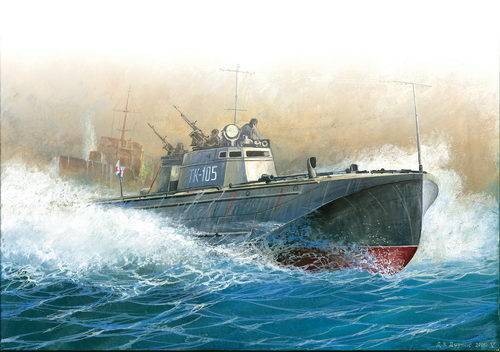
18 August 1919, in 3 hours of 45 minutes, unidentified aircraft appeared over Kronstadt. On the ships struck air raid. Actually, there was nothing new for our sailors - British and Finnish aircraft were based in 20 – 40 km from Kronstadt on the Karelian Isthmus and almost all summer 1919 made raids on ships and the city, although without much success.
But in 4 hours 20 minutes from the destroyer "Gabriel" two high-speed boats were noticed, and almost immediately there was an explosion near the harbor wall. This torpedo from a British boat, passing by the "Gabriel", exploded, hitting the pier.
In response, the sailors from the destroyer with the first shot from the 100-mm guns smashed the nearest boat into smithereens. Meanwhile, two more boats, entering the Middle Harbor, headed: one to the training ship Memory of Azov, the other to the Ust-Kanal Slingshot (entrance to the dock of Peter I). Released torpedoes, the first boat blew up the “Memory of Azov”, the second one blew up the battleship “Andrey Pervozvanny”. At the same time, boats fired machine guns at the vessel wall. When leaving the harbor, both boats in 4 hours of 25 minutes were sunk by the fire destroyer "Gabriel". So ended the raid of British torpedo boats, which entered the history Civil war called Kronstadt wake-up.
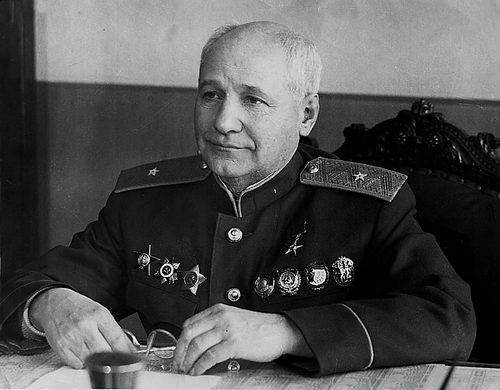
Floating torpedo tubes
Note that this was not the first use of British torpedo boats in the Gulf of Finland. 17 June 1919, the cruiser "Oleg" was anchored at the Tolbukhin lighthouse guarded by two destroyers and two patrol vessels. The boat approached the cruiser almost point-blank and fired a torpedo. The cruiser sank. It is easy to understand how the service of the Red Army was carried, if no one noticed a boat on the cruiser, or on the ships guarding it during the daytime and with excellent visibility. After the explosion, indiscriminate fire was opened at the "British submarine", which was seen by the military constables.
Where did the English, with the incredible speed of 37 nodes (68,5 km / h), move from the English? British engineers managed to combine two inventions in the boat: a special ledge in the bottom - a redan and a powerful gasoline engine in the 250 hp. Thanks to the redan, the contact area of the bottom with water was reduced, and hence the resistance to the ship’s course. The boat was no longer sailing - it seemed to crawl out of the water and glided along it at great speed, relying on the water surface only with a shelf ledge and a flat aft tip.
Thus, in the 1915 year, the British designed a small high-speed torpedo boat, sometimes called a “floating torpedo tube”.
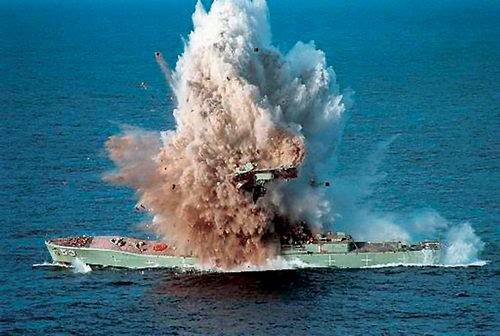
Shooting back
From the very beginning, the British command considered torpedo boats exclusively as sabotage weapon. The British admirals proposed to use light cruisers as carriers of torpedo boats. The torpedo boats themselves were supposed to be used to attack enemy ships in their bases. Accordingly, the boats were very small: length 12,2 m and displacement 4,25 t.
Putting a normal (tubular) torpedo tube on such a boat was unrealistic. Therefore gliding boats fired torpedoes ... back. Moreover, the torpedo was thrown out of the aft gutter not with its nose, but with its tail. At the moment of release, the torpedo engine turned on, and she began to catch up with the boat. The boat, which at the time of the volley was supposed to go at a speed of about 20 nodes (37 km / h), but no less than 17 nodes (31,5 km / h), sharply turned aside, and the torpedo retained the original direction, while simultaneously taking the specified depth and increasing move up to full. Needless to say that the accuracy of firing a torpedo from such an apparatus is significantly lower than from a tubular one.
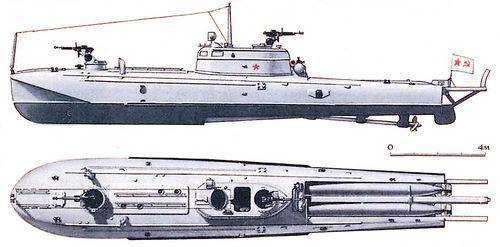
Revolutionary boats
17 September 1919 The Revolutionary Military Council of the Baltic Fleet, on the basis of an inspection report of an English torpedo boat raised from the bottom in Kronstadt, appealed to the Revolutionary Military Council with a request to issue an urgent construction of high-speed boats of the English type in our factories.
The issue was considered very quickly, and already on September 10, 25 was reported to the Revolutionary Military Council that “due to the absence of special type of mechanisms that are not yet manufactured in Russia, the construction of a series of such boats is certainly not feasible”. That thing then ended.
But in 1922, the Ostekhbyuro Bekauri became interested in gliding boats. At his insistence, on February 7, 1923, the Main Marine Technical and Economic Department of the People’s Commissariat for Maritime Affairs sent a letter to TsAGI “in connection with the need for fleet in gliders, of which tactical missions: 150 km range, speed 100 km / h, weapons, one machine gun and two 45 cm Whitehead mines, length 5553 mm, weight 802 kg. ”
By the way, V.I. Bekauri, not very much hoping for TsAGI and Tupolev, insured himself and in the year 1924 ordered the French firm Picker a gliding torpedo boat. However, for several reasons, the construction of torpedo boats abroad did not take place.
Gliding bobber
But Tupolev zealously got down to business. The small radius of the new torpedo boat and its poor seaworthiness did not bother anyone at the time. It was assumed that the new gliders will be placed on cruisers. On the "Profintern" and "Chervona Ukraine" was supposed to do for this additional dumping davit.
The basis of a gliding boat ANT-3 was the float of a seaplane. The top of this float, actively influencing the strength of the structure, went to the boats of Tupolev. Instead of the upper deck, they had a steeply curved convex surface on which it was difficult for a person to hold even when the boat was stationary. When the boat was on the move, it was deadly to get out of its conning tower - the wet slippery surface threw off absolutely everything that fell on it (unfortunately, with the exception of ice, in winter conditions the boats frost down in the surface part). When during the war the torpedo boats of the G-5 type had to carry troops, then people were jabbed into the torpedo tubes, they had no place to be. Possessing relatively large reserves of buoyancy, these boats practically could not carry anything, since there was no room for them to accommodate the cargo.
The design of the torpedo apparatus, borrowed from the English torpedo boats, was also unsuccessful. The minimum speed of the boat at which he could launch his torpedoes was 17 nodes. On a smaller turn and on the foot, the boat could not launch a torpedo salvo, since this would mean suicide for him — an inevitable hit of a torpedo.
6 March 1927, the ANT-3 boat, later called the “Firstborn”, was sent by rail from Moscow to Sevastopol, where it was safely launched. From 30 April to 16 July of the same year, ANT-3 was tested.
On the basis of ANT-3 a boat ANT-4 was created, which developed the speed of the 47,3 node (87,6 km / h) on tests. According to the ANT-4 type, mass production of torpedo boats, called Sh-4, was launched. They were built in Leningrad at the plant to them. Marty (former Admiralty Shipyard). The cost of the boat was 200 thousand rubles. The boats W-4 were equipped with two Wright-Typhoon gasoline engines supplied from the USA. The armament of the boat consisted of two torpedo tubes of the flute type for 450-mm torpedoes of the 1912 model of the year, one 7,62-mm machine gun and smoke-generating equipment. Total factory them. Marty in Leningrad was built 84 boats W-4.
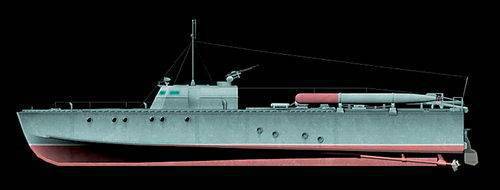
D-3 torpedo boat
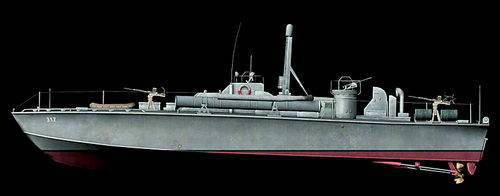
ELCO torpedo boat

Torpedo boat G-5

Torpedo boat S-boat Schnellboot
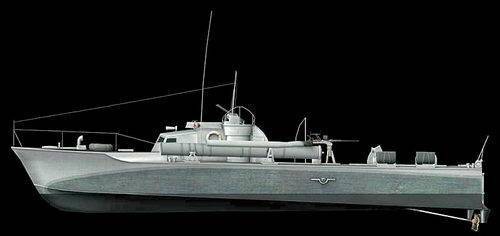
Torpedo boat A-1 "Reached"
The fastest in the world
Meanwhile, 13 June 1929, the Tupolev in TsAGI began construction of a new gliding duralumin boat ANT-5, armed with two 533-mm torpedoes. From April to November 1933, the boat passed factory tests in Sevastopol, and from November to December - government tests. The ANT-22 tests literally delighted the authorities - the boat with torpedoes developed the speed of 5 nodes (58 km / h), and without torpedoes - the 107,3 node (65,3 km / h). The speedboats of other countries could not even dream of such speeds.
Plant them. Marty, starting with the V series (the first four series - this boat W-4), moved to the production of G-5 (the so-called serial boats ANT-5). Later, the G-5 was built at the plant number 532 in Kerch, and with the beginning of the war the plant number 532 was evacuated to Tyumen, and there at the plant number 639 they also began to build boats of the G-5 type. A total of nine series G-321 serial boat (from VI to XII, including XI-bis) was built 5.
Torpedo armament for all series was the same: two 533-mm torpedoes in flute tubes. But the machine-gun armament was constantly changing. So, boats of the VI-IX series had two 7,62-mm aviation machine gun YES. The next series had two 7,62-mm ShKAS aircraft machine guns, which were distinguished by a higher rate of fire. Since 1941, the boats began to be equipped with one or two 12,7 mm DShK machine guns.
Torpedo leader
Tupolev and Nekrasov (the direct head of the experimental design team on gliders) did not calm down on the G-5 and in the year 1933 proposed the project "leader of torpedo boats G-6". According to the draft, the displacement of the boat should have been 70 tons. Eight motors GAM-34 by HP 830. had to provide speed up to 42 nodes (77,7 km / h). The boat could launch a volley with six 533-mm torpedoes, three of which were launched from aft-type torpedo-type torpedo-tubes, and another three from a three-tube rotary torpedo-apparatus, located on the deck of the boat. The artillery armament consisted of a 45-mm semi-automatic 21K cannon, an “aviation type” 20-mm cannon, and several 7,62-mm machine guns. It should be noted that by the beginning of the construction of the boat (1934), both rotary torpedo tubes and 20-mm guns of “aviation type” existed only in the imagination of the designers.
Death pills
Tupolev boats could operate torpedoes in the midst of agitation up to 2 points, and stay in the sea - up to 3 points. Poor seaworthiness was manifested primarily in the flooding of the bridge of the boat, even with the slightest agitation and, in particular, the strong splashing of the very low wheelhouse open at the top, which hampered the work of the boat crew. The autonomy of the Tupolev boats was also a derivative of seaworthiness - their design range could never be guaranteed, as it depended not only on the fuel supply, but on the weather. Storm conditions in the sea are relatively rare, but fresh wind, accompanied by agitation 3 – 4 points, a phenomenon that can be said to be normal. Therefore, every exit of Tupolev torpedo boats into the sea bordered on a mortal risk without any connection with the combat activity of the boats.
The rhetorical question: why then hundreds of gliding torpedo boats were built in the USSR? It's all about the Soviet admirals, for whom the British Grand Fleet was a constant headache. They seriously thought that the British Admiralty would operate in 1920 – 1930-s just as in Sevastopol in 1854, or in Alexandria in 1882-m. That is, the British battleships in calm and clear weather will approach Kronstadt or Sevastopol, and the Japanese battleships - to Vladivostok, anchor and do battle in accordance with the “Gosta regulation”.
And here dozens of the fastest torpedo boats of the Sh-4 and G-5 type will fly into the enemy armada. At the same time part of them will be radio-controlled. Equipment for such boats was created in Ostebbyuro under the guidance of Bekauri.
In October 1937, a large exercise was conducted using radio-controlled boats. When the compound, depicting an enemy squadron, appeared in the western part of the Gulf of Finland, more than 50 radio-controlled boats, breaking through smoke screens, rushed from three sides to the enemy ships and attacked them with torpedoes. After the exercise, the division of radio-controlled boats was commended by the command.
We will go our own way
Meanwhile, the USSR was the only leading maritime power that built torpedo boats of the red type. England, Germany, the USA and other countries switched to the construction of seaworthy keel torpedo boats. Such boats were inferior in speed in calm weather, but significantly exceeded them with a wave of 3 – 4 points. Keel boats carried more powerful artillery and torpedo weapons.
The superiority of the keelboats over the Reds became apparent during the 1921 – 1933 war off the US eastern coast, which was led by the Yankee government with ... Mr. Bacchus. Naturally, Bacchus won, and the government was forced to shamefully repeal the “dry law”. A significant role in the outcome of the war was played by speedboats of the Elko company, which delivered whiskey from Cuba and the Bahamas. Another question is that the same company built boats for the coast guard.
The capabilities of the keelboats can be judged at least by the fact that the Scott-Payne boat with a length of 70 feet (21,3 m), armed with four 53-cm torpedo tubes and four 12,7-mm machine guns, passed from England to the USA under its own power and 5 September 1939 was solemnly greeted in New York. In the image of his firm "Elko" began mass construction of torpedo boats.
By the way, 60 boats of the Elko type were supplied under lend-lease in the USSR, where they received an A-3 index. On the basis of the A-3 in 1950-s, we have created the most common torpedo boat of the Soviet Navy - the project 183.
Germans with a keel
It is worth noting that in Germany, literally bound hand and foot by the Versailles Treaty and covered by the economic crisis, in 1920-s they were able to carry out tests of extended and keel boats. According to the test results, an unambiguous conclusion was made - to make only keel boats. Monopolist in the production of torpedo boats became the firm "Lyursen".
During the war years, German boats operated freely in fresh weather throughout the North Sea. Based in Sevastopol and in Dvuyakornaya Bay (near Theodosia), German torpedo boats operated throughout the Black Sea. At first, our admirals didn’t even believe that German torpedo boats operated in the Poti region. Meetings of our and German torpedo boats invariably ended in favor of the latter. During the fighting of the Black Sea Fleet in 1942 – 1944, not a single German torpedo boat was sunk in the sea.
Flying over the water
Dot the i's. Tupolev - a talented designer of aircraft, but why it was necessary not to take up their cause? In some ways, it can be understood - huge funds were allocated for torpedo boats, and in the 1930s there was a tough competition among aircraft designers. Let's pay attention to one more fact. The construction of boats we have not been classified. The gliders flying above the water were used to the full by Soviet propaganda. The population constantly saw Tupolev's torpedo boats in illustrated magazines, on numerous posters, in newsreels. The pioneers, voluntarily-compulsively, taught to make models of wounded torpedo boats.
As a result, our admirals became a victim of their own propaganda. Officially it was thought that Soviet boats were the best in the world and there was no point in paying attention to foreign experience. Meanwhile, agents of the German firm "Lursen", starting from 1920-s, "stuck out their tongues" and were looking for clients for themselves. Bulgaria, Yugoslavia, Spain and even China became customers of their keel boats.
In 1920 – 1930's, the Germans easily shared with Soviet colleagues secrets in the field of tank building, aviation, artillery, toxic agents, etc. But we did not even lift a finger to buy at least one Lursen.
Information